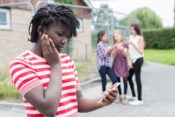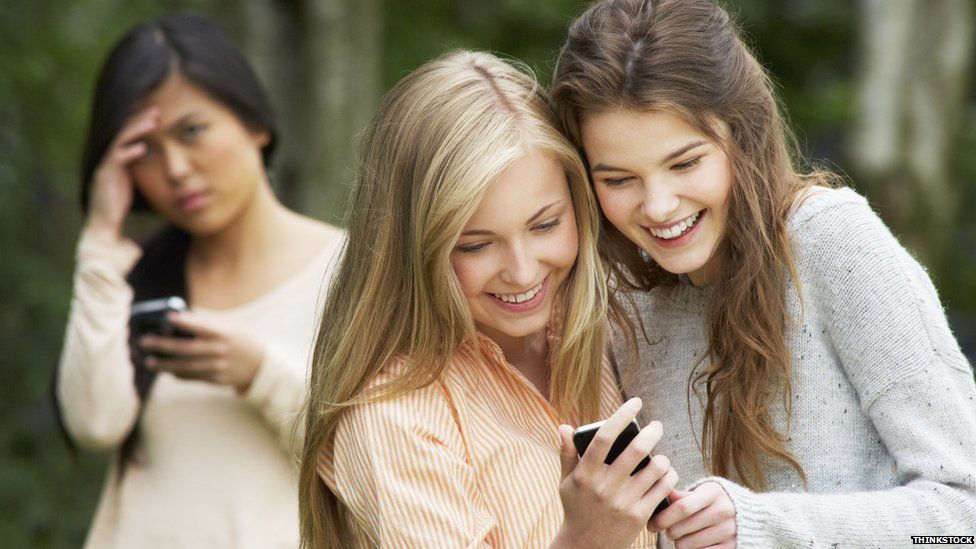Waldorf News
Why Social Media is Ruining Your Relationships: Consider social media’s role in modern life, its ability to mold relationships, and how it impacts an individual’s self-image.

By Katherine Ormerod
How would you define a friend? Is it someone you could turn to no matter what? Just call my name and I’ll be there? Or is it someone who you’re in near-constant contact with, speaking to all day, every day? Is it the person you’ve got the longest “Snapstreak” (chatted on Snapchat for over three days straight) with? How much one-on-one time do you have together? And what are your conversations like – deeply engaged and empathetic, or more interrupted and punctuated into bite-size snippets?
The impact that social media is having on all of our relationships, spanning our families, friends and romantic couplings to our very relationships with ourselves, has been fundamentally altered by the way we use our devices to communicate with each other. What we now need from our networks is in flux, and the very nature of friendship and the foundations on which we believe they should be based have changed almost beyond recognition. The question is: is social media enhancing our social lives, or is it doing the exact opposite?
Humans are by definition social beings. From a genetic perspective, we have evolved to live in social groups for both protection and reproduction. Being social makes us buoyant: connection to a group makes us happier; social exchanges reduce the stress hormone cortisol, while simultaneously raising feel-good oxytocin and serotonin. Being social is basically like biological crack – so is it any wonder that we’ve become so very quickly, so very deeply infatuated with social media?
“As humans, we thrive by building relationships. It’s very primordial. Social media plays right into what really makes us tick as human beings,” explains Dr James A Roberts, a professor in marketing and an expert on digital consumer behaviour. And who can argue? Logging on to read thoughtful comments and messages from friends, seeing what loved ones are busy getting up to and reading insightful stories which make us feel connected to our digital tribe can create an instant sense of belonging.

GettyImages/DaisyDaisy
It can also relieve any feelings of loneliness and reduce the geographical differences between us that are part of modern lifestyles. But it’s no panacea and the very reasons that it’s so seductive have also become causes for concern. “As relationships are so important to us, there’s an argument that the more we use social media, the better. But that’s only if we’re actively interacting with other people – sending messages and pictures and connecting,” Dr Roberts continues. “But really what we’re finding is that much of social media use is passive, characterized by ‘lurking’ or ‘creeping’. We’re spending hours not actually socializing, but merely viewing other people, consuming sanitized, best case scenarios of each other’s lives. Instead of the feel-good hormones we might expect to be pumping through our veins instead, we’re torn between feelings of FOMO and inadequacy.”
The tech companies have jumped upon this distinction between active and passive social media consumption as the new paradigm for determining “good” vs “bad” social media relationships. The argument is that if you’re actually using platforms to meaningfully connect, then you’ll reap the positive rewards that digital socialization can offer. On the other hand, if you stay schtum and just lurk, stalk and creep, your mental health and happiness will be at risk. As an admission that social media can be bad for us, it’s a start, but there are many, many other factors at play when it comes to the ways in which social media has changed our relationships. The distinction between active and passive use is too simplistic to nail it. Essentially, our phones and social apps haven’t just changed how we make relationships, they’ve also changed what we believe relationships to be.
Quantity Over Quality: Friendships in the Digital Scape
With our phones by our sides we are never alone. Even though I work from home on my own I speak to lots of different people via social media, email and messaging services. In fact, I’d say I have some kind of exchange with at least 50 people a day, about half of whom are people I know and half are those I don’t know at all. In the olden days, speaking to 50 people would be an über-social day, but now, in our mediated world, it’s pretty unremarkable. Being alone with technology feels markedly less alone. In 2008, Clive Thompson coined the term “ambient intimacy”, a description of the cumulative impact of comforting pieces of micro-information which we’re all consuming daily about each other. Instead of having to make an effort to meet with friends in person, we can skim “weak ties” to get those little hits of connection which we crave. By plugging into our phones we can escape ourselves and the strain of solitude and swim in a simulated sea of social interaction.
This state of affairs has an interesting impact on widely accepted psychological theories. For example, “Dunbar’s Number”, named after anthropologist Robin Dunbar, suggests that there’s an upper limit on how many people we can know before connections start to fray. In 1998, he published his beliefs that the human brain can only manage a finite number of relationships, somewhere around the 150 mark. Other psychological studies have supported the reasoning by showing that social human groupings generally taper off around that number.
I currently follow 838 people on Instagram, I’ve got 848 friends on Facebook and 303 on Twitter. And that’s before we even get into the responses I give to comments from the approximately fifty thousand followers across all my platforms. And I’m not unique in this; most of us are now connected to a veritable ton of people. So how are we doing it when our human brains can only apparently cope with 150 contacts?
The answer is simple: most of these people are not your friends. They can’t give you the connection you seek, and the apparent intimacy they offer is all an illusion. This is harsh but true, and what’s more, the research proves it: teens who visit social-networking sites daily yet meet up with their friends less frequently are the most likely to agree that “A lot of times I feel lonely,” “I often feel left out of things,” and “I often wish I had more good friends.”
A 2014 study showed that a quarter of people didn’t feel they had one person they could confide their personal troubles and triumphs to. Loneliness has been shown to be as damaging to our health as smoking 15 cigarettes a day, and it’s become worryingly normalized across all ages and social backgrounds. The UK government even just appointed a “Loneliness Minister” in an effort to tackle the issue.
Spending my days alone but constantly connected doesn’t stop me from feeling isolated. It doesn’t stop me from jumping on my boyfriend the moment he walks in the door, desperate for some kind of human contact. It really just makes me feel alienated in my little silo, working as a one-woman band. And the people I’m connected to? Apart from those I’m genuinely intimate with, most of them are what has been termed “parasocial friends” – remote connections similar to those we can form with celebrities or even fictional characters. Keeping up with their movements can use up some of the emotional space in our Dunbar number, pushing out the people with whom we have authentic connections. Spreading myself thinly over hundreds, if not thousands, of people means that I have less time for my real life mates.
One of my new year’s resolutions was to devote some of the four and a half hours per day I’d been filling with screen time to face-to-face meetings instead. Yes, it takes a chunk out of your day, but only a chunk you’d be wasting on your phone. More connection doesn’t mean less isolation. It just means we’re using our social time on shallow and non-meaningful snippets of friendships – or ambient intimacy – rather than the real thing.
From the Utne Reader
 Apply Today: New Cohort Starts Nov. 2025
Apply Today: New Cohort Starts Nov. 2025 Caring for All Stages of Life
Caring for All Stages of Life Quality Education in the Heartland
Quality Education in the Heartland Association for a Healing Education
Association for a Healing Education ~ Ensoul Your World With Color ~
~ Ensoul Your World With Color ~ Full-Time Teacher Education
Full-Time Teacher Education Roadmap to Literacy Books & Courses
Roadmap to Literacy Books & Courses Jamie York Books, Resources, Workshops
Jamie York Books, Resources, Workshops Train to Teach in Seattle
Train to Teach in Seattle Waldorf EC Training & Intensives in Canada
Waldorf EC Training & Intensives in Canada Bringing Love to Learning for a Lifetime
Bringing Love to Learning for a Lifetime Everything a Teacher Needs
Everything a Teacher Needs Bay Area Teacher Training
Bay Area Teacher Training Art of Teaching Summer Courses 2025
Art of Teaching Summer Courses 2025 Transforming Voices Worldwide
Transforming Voices Worldwide Summer Programs - Culminating Class Trips
Summer Programs - Culminating Class Trips Storytelling Skills for Teachers
Storytelling Skills for Teachers Immersive Academics and Arts
Immersive Academics and Arts The Art of Administration and Leadership
The Art of Administration and Leadership The Journey is Everything
The Journey is Everything Dancing for All Ages
Dancing for All Ages Space speaks. Its language is movement.
Space speaks. Its language is movement. Middle School Science With Roberto Trostli
Middle School Science With Roberto Trostli Waldorf-inspired Homeschool Curriculum
Waldorf-inspired Homeschool Curriculum Flexible preparation for your new grade
Flexible preparation for your new grade Discovering the Wisdom of Childhood
Discovering the Wisdom of Childhood Grade Level Training in Southern California
Grade Level Training in Southern California RSS Feeds
RSS Feeds